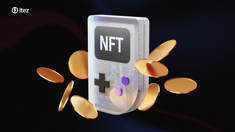Cryptocurrencies promise financial freedom and decentralisation. Unfortunately, the price for access to this new tool has been a new wave of scams. The lack of centralised control makes cryptocurrency platforms and investors easy targets for criminals.
In this comprehensive guide, we will explore some of the most prominent scams that have shaken the market. We will also delve into how exactly fraudsters steal cryptocurrency and how to avoid falling victim to their traps.
Introduction to Bitcoin Scams
The Rise of Bitcoin and Associated Scams
Since its inception in 2009, Bitcoin has rapidly developed, both in terms of value and public interest. However, with the growing popularity of cryptocurrency came its darker side: fraud. The decentralised and largely unregulated nature of Bitcoin makes it an ideal target for scammers who attempt to deceive inexperienced users. Fraudsters employ various schemes to lure victims, often posing as legitimate organisations or offering investment opportunities that sound too good to be true.
Why Bitcoin Scams are Prevalent
The global appeal of Bitcoin, its anonymity, and the absence of traditional oversight create an ideal environment for scams. Many users, especially newcomers, may not fully understand how Bitcoin works and its underlying technology, leaving them vulnerable. Scammers are experts in exploiting this knowledge gap, often targeting those eager to make quick profits from the volatility of the cryptocurrency market.
Common Types of Bitcoin Scams
Now let's take a look at the main types of scams and their signs, so that in case of an emergency, you can easily navigate and quickly spot the signs of a potential scam.
🎣 Phishing Scams
Fraudsters create fake websites that copy the interfaces of popular crypto wallets or exchanges to steal user data.
Signs. Unexpected emails from exchanges asking to urgently update data, fake URLs that are almost indistinguishable from the originals.
Example. In 2020, users of the KuCoin exchange received fake emails with a link to a counterfeit website. Entering data led to the theft of cryptocurrency worth over $280 million.
🎰 Fake Investment Platforms
Scammers create fake exchanges, wallets, or platforms for trading cryptocurrency, promising high returns. Initially, everything seems legitimate, but when trying to withdraw funds, access is blocked.
Signs. Promises of guaranteed returns, fake reviews, pressure to invest more money, inability to withdraw funds.
Example. In 2020, the platform Arbistar suddenly stopped payments, claiming "technical issues," leading investors to lose about $1 billion. It later turned out to be a Ponzi scheme. More than 120,000 investors did not get their funds back.
🪙 Fraudulent Tokens
Fraudsters send tokens that seem valuable at first glance. When trying to sell them, a smart contract is triggered that steals the user’s real assets. There are also targeted token launches to conduct pump and dump schemes. The goal is to inflate the cryptocurrency's price to the limit and then sell everything at the peak, leaving investors with worthless "coins."
Signs. Coins of suspicious origin.
Example. In 2021, the SQUID token, inspired by the series Squid Game, attracted millions. After the developers suddenly disappeared, investors lost $3.38 million.
🎁 Giveaway Scams
Fraudsters promise to double or return cryptocurrency if the user sends them a small amount. These schemes are often carried out using real or fake celebrity accounts.
Signs. Promises to "double" investments, messages from celebrities about cryptocurrency giveaways, urgent requests to send money.
Example. In 2020, hackers compromised the accounts of Elon Musk, Bill Gates, and other celebrities on X (formerly "Twitter") and posted messages about "giving away" Bitcoin. Victims lost over $120,000.
👩❤️👨 Romance Scam through Social Media
Fraudsters contact victims via social media or dating sites, build a trusting relationship, and then offer to invest in cryptocurrency.
Signs. Offers to "help" with investments from a new "friend," pressure to transfer cryptocurrency via unknown platforms.
Example. In 2021, a 75-year-old woman from the US transferred over $300,000 via a fake platform, trusting a "friend" from a dating site.
Case Studies of Notable Bitcoin Scams
To better understand our "enemy", let's explore some of the most high-profile scandals in the crypto industry, which continue to remain a "dark stain" in the history of the market.
🥇 FTX — ($8 billion, 2022)
The collapse of the FTX exchange and its associated company, Alameda Research, became one of the largest scams in cryptocurrency history. Founder Sam Bankman-Fried is accused of misappropriating client assets worth $8 billion. You can read more about this story in our dedicated article.
🥈 BitConnect — ($2 billion, 2016–2018)
BitConnect promised high returns on investments, attracting investors from all over the world. Unfortunately for investors, the project turned out to be one of the largest Ponzi schemes in crypto history.
🥉 Mt. Gox — ($450 million, 2011–2014)
At one time, Mt. Gox was the largest Bitcoin exchange, controlling up to 70% of all Bitcoin transactions. After a major hack and poor management, the exchange went bankrupt, and investors lost 850,000 Bitcoins. The platform’s trustees have yet to settle with creditors.
How to Identify and Avoid Bitcoin Scams
Scams are a major and serious threat to participants in the cryptocurrency industry. But forewarned is forearmed. Let's look at how you can protect yourself from these dangers using techniques and practices that are available to everyone.
Red Flags to Watch For
There are several key red flags to look out for. Among them:
🚩 Promises of high returns: Unfortunately, in the context of investing, there can be no guaranteed profits. If you see promises of sky-high amounts that "you will definitely receive," then it is highly likely you are dealing with scammers.
🚩 Pressure tactics: Fraudulent offers are often "time-limited." Scammers pressure their victims into acting quickly, depriving them of the time needed to assess the situation rationally.
🚩 Unsolicited offers: If you receive a message on a messenger or an email from an unknown sender, it is likely from a scammer.
Practical Tips for Safe Trading
Here are the key protective measures against cryptocurrency scams:
1. Use only official websites and apps. Download wallets and cryptocurrency trading apps only from official sources like Google Play or the Apple Store. Avoid third-party sites or links. Regularly check the URLs of websites to ensure they are genuine. Fake websites often use very similar domains.
2. Never share your private keys. Private keys are personal information and must never be shared with anyone. No platform or wallet will ask you for this information. Use offline or hardware wallets for storing large amounts of cryptocurrency.
3. Enable two-factor authentication (2FA). Always use 2FA for your crypto wallets and exchanges. This adds an extra layer of protection and makes it more difficult for someone to access your account.
4. Avoid offers with unrealistic returns. Scammers often promise high guaranteed returns that are practically impossible. Always be suspicious of offers with "guaranteed profits" or promises to double your investments.
5. Do not enter your details on unknown websites. Do not enter your login credentials on unfamiliar platforms or suspicious websites. Fake exchanges and wallets can steal user data to steal their cryptocurrency.
6. Check reviews and project documentation. If you are planning to invest in new crypto projects, always check their reputation. Look for reviews and study the project’s whitepaper for errors or missing details.
7. Protect your devices. Use reliable antivirus software and avoid installing suspicious browser extensions that might steal your wallet data.
These steps will help you avoid losing funds and secure your cryptocurrency assets from scammers.
Conclusion
Unfortunately, Bitcoin scams and other forms of fraud remain a prevalent issue in the crypto market even in 2025. To deal with this threat, always stay alert, use only trusted information, and do not respond to dubious offers.
With the growth of the digital assets industry, we can expect new tools and practices to emerge to combat scammers, and gradually, this threat will start to diminish.
🤔 Do you think you can recognize a Bitcoin scam case? Share your views in our socials!
💌 Telegram, Twitter, Instagram, Facebook
Here are three other cool articles:
Top 5 Cryptocurrencies in 2024
Top 5 Crypto Events That Shaped the Market Momentum in 2024
This article is not investment advice or a recommendation to purchase any specific product or service. The financial transactions mentioned in the article are not a guide to action. It’s not intended to constitute a comprehensive statement of all possible risks. You should independently conduct an analysis on the basis of which it will be possible to draw conclusions and make decisions about making any operations with cryptocurrency.








